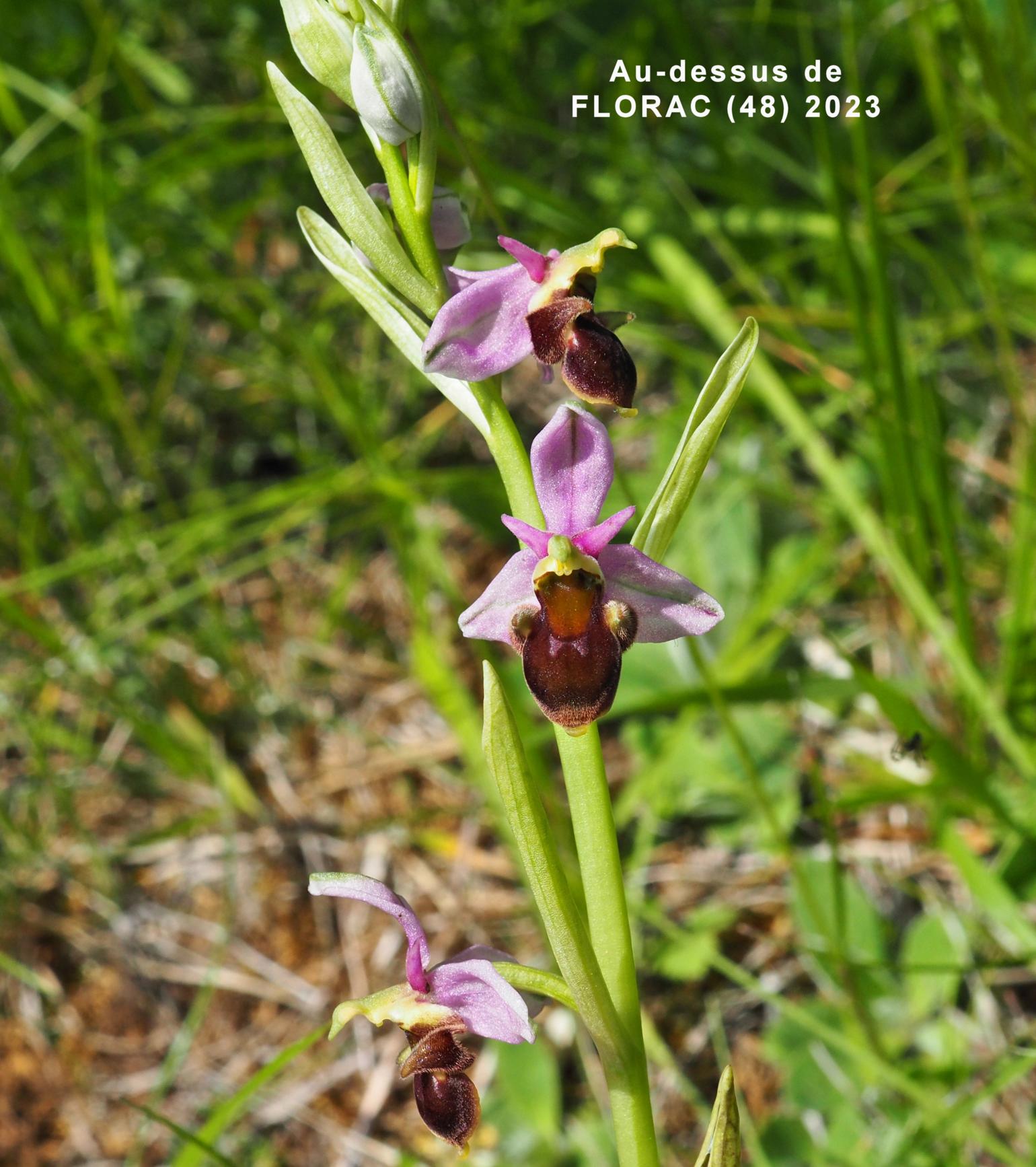 (modifié de Coste, Flore de la France 1937) :
(modifié de Coste, Flore de la France 1937) :
[Différences de la variété en rouge ; forme/variété pas generalement accepté]
Plante vivace de 15-45 cm, glabre, à tubercules subglobuleux ou ovoïdes.
Écologie : (répartition d'après la flore) Lieux herbeux ou boisés, Variété très rare localement
Répartition hors de France : Région méditerranéenne.
 (modified from Wiki):
(modified from Wiki):
NOTE: the French text is more complete and up-to-date
An uncommon variety found throughout the range of O. apifera The lip has completely lost its specular markings and appears as a uniform brown alhough the basal field is still vaguely visible as a lighter shade of brown.
Ecology UK:
France:
Distribution outside France: ?
Fleurs : 3-10, en épi long et lâche ; Labelle long de 7-1 0 mm (appendice exclu) chez la majorité des fleurs disions intérieures roses, oblongues, étalées, les 2 intérieures 2-3 fois plus courtes, linéaires, rosées, veloutées ; .labelle plus long que les divisions extérieures, elliptiques-oblong, subcylindrique, brun pourpre velouté, [labelle toute brun, ayant perdue, ou presque perdue, les taches], , muni à la base de 2 gibbosités coniques, trilobé, atténué au sommet, terminé par un appendice lancéolé courbé en dessus ; gynostème à bec grêle et aigu.
Floraison France : Avril-juin.
Flowers: The flower spike is very variable in height, usually 10-50 cm tall, but occasionally up to 90 cm. Flowers 2-15; 7-16 mm long by 3-10 mm wide. There are three outer sepals which may be lighter or darker shades of green or violet, the lightest appearing white. The upper sepal varies from flat to boat-shaped and is bent backwards at the base and then curves forwards. Inside the sepals are three petals, two lateral petals and the lip. The lateral petals may be pink to violet in colour, or green, and are around 1.58 mm long by 0.84 mm wide.
The lip has a complex three-dimensional shape and is strongly patterned. It is divided at the base into three lobes, each of which is rolled up so that from the front there appear to be three tubes.

 Orchid, Woodcock
Orchid, Woodcock
 Ophrys bécasse
Ophrys bécasse









 Please
consider
Please
consider 











